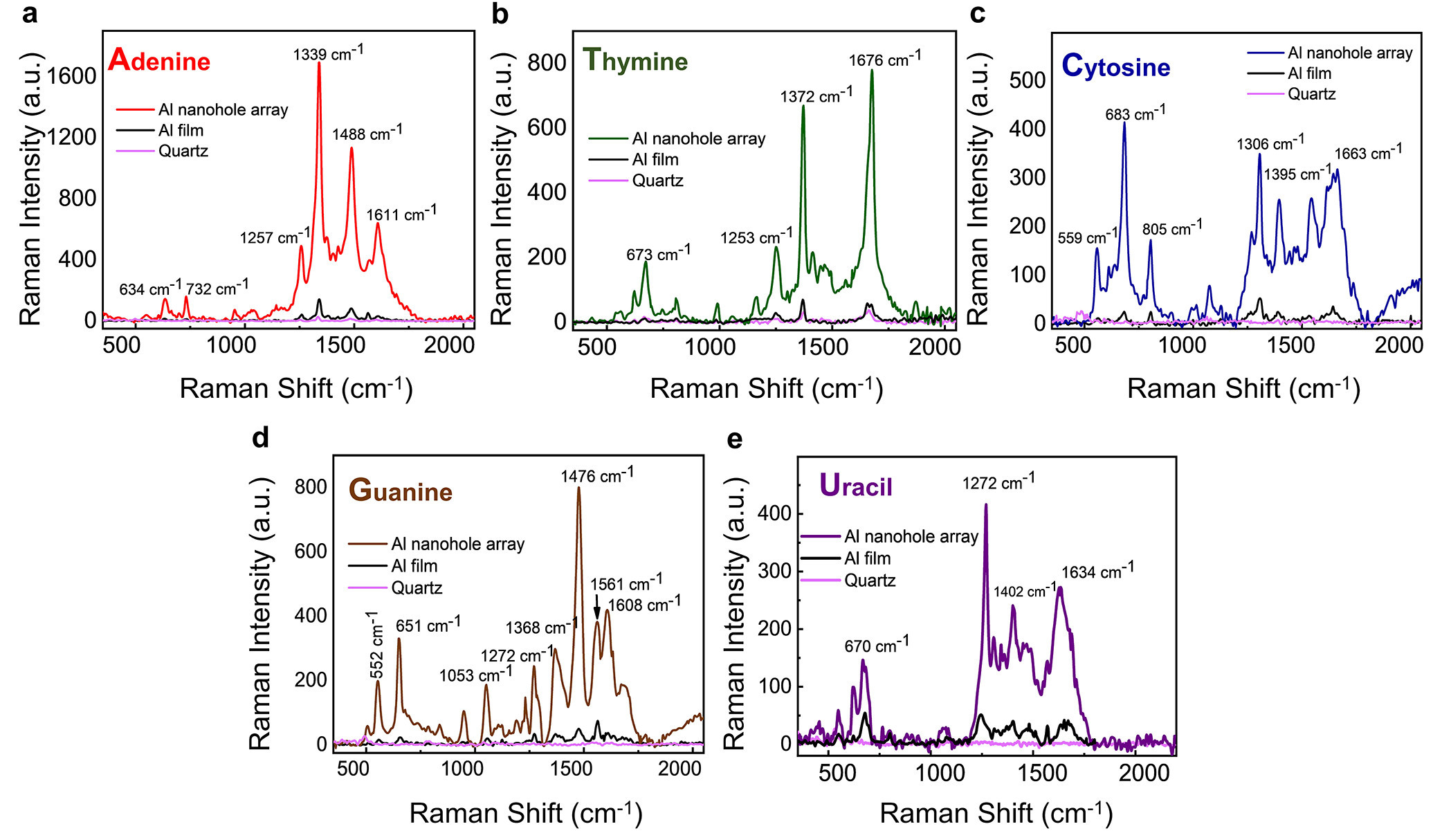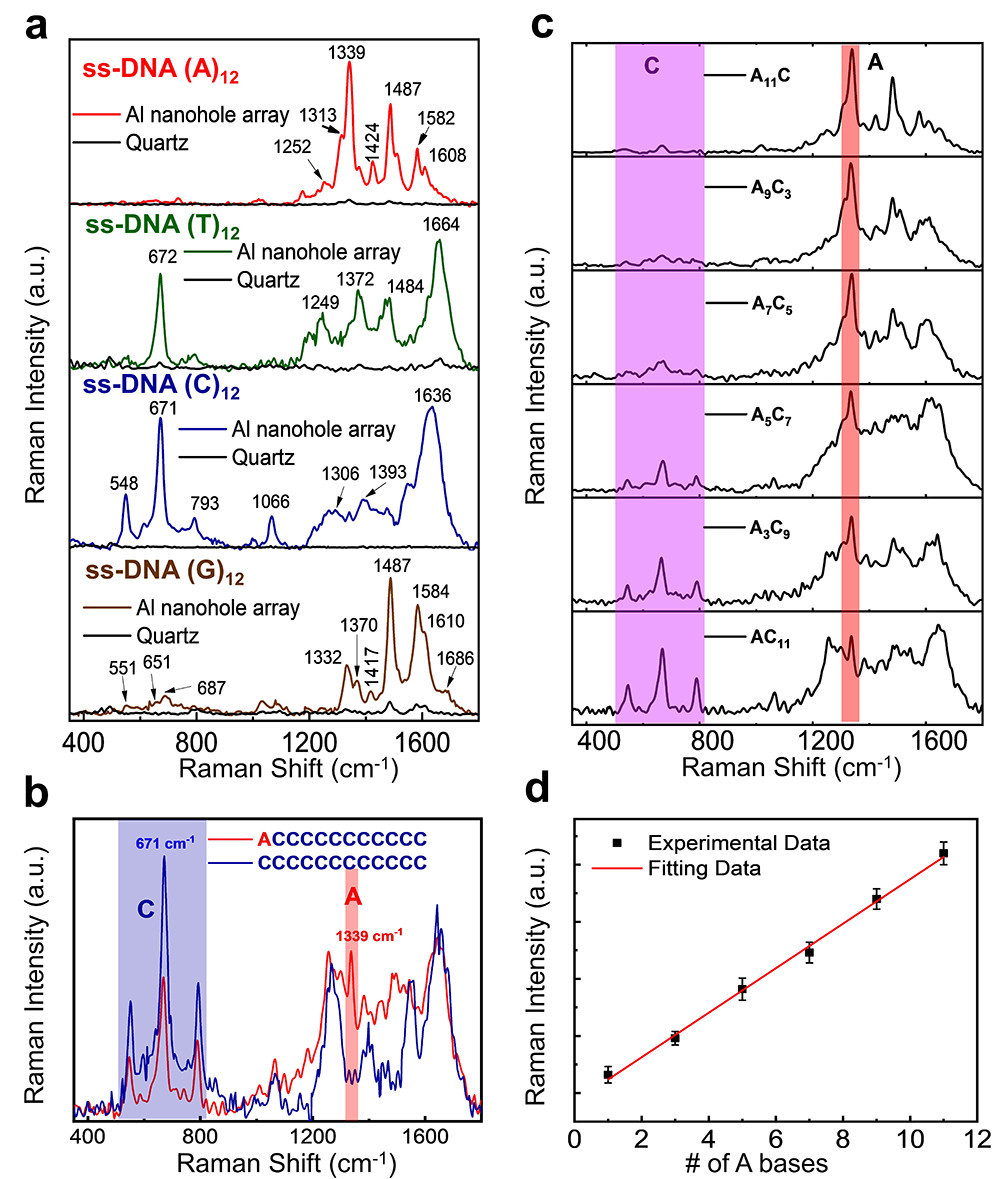| Technical Name | Demonstration of a Superior Deep-UV Surface-Enhanced Resonance Raman Scattering (SERRS) Substrate and Single-Base Mutation Detection in Oligonucleotides | ||
|---|---|---|---|
| Project Operator | National Tsing Hua University | ||
| Project Host | 嚴大任 | ||
| Summary | Deep-UV SERRS offers a label-free solution with strong electromagnetic confinement and charge transfer. Our substrate resonates with Raman laser and ss-DNA at 266 nm, yielding significant signals. Obtaining SERRS spectra for all bases, we record up to 106 yield enhancement for 1 nm adenine monomer. It linearly quantifies single-base mutations in 12-mer ss-DNA. This substrate holds promise for accurate mutation analysis in genomics and medical screening, advancing research in a compact form. |
||
| Scientific Breakthrough | Our team has successfully grown single-crystal aluminum using molecular beam epitaxy and fabricated periodic aluminum hole arrays through the combination of electron beam lithography and plasma etching techniques. Using this substrate, we measured DNA composed of 5 nitrogenous bases and achieved complete Raman peaks for all bases, whereas others only observed adenine peaks. This groundbreaking technique enables both qualitative and quantitative analysis of nucleic acid variations. |
||
| Industrial Applicability | SERS tech is widely applied in biology, medicine, materials science, environmental monitoring, national security, and health diagnostics. It enables bacterial classification, protein research, tumor cell ID, immunodetection, nanomaterial studies, water pollution monitoring, trace explosive detection, blood glucose, and cholesterol sensing. Our research enhances SERS substrates through resonance effects and deep-UV range. |
||
| Keyword | Biopolymers Cytosine Genetics Plasmonics Resonance structures Deep-UV surface-enhanced resonance Raman spectroscopy DNA Aluminum Nano hole array | ||
- Contact
- Ta-jen Yen
- tjyen@mx.nthu.edu.tw
other people also saw







